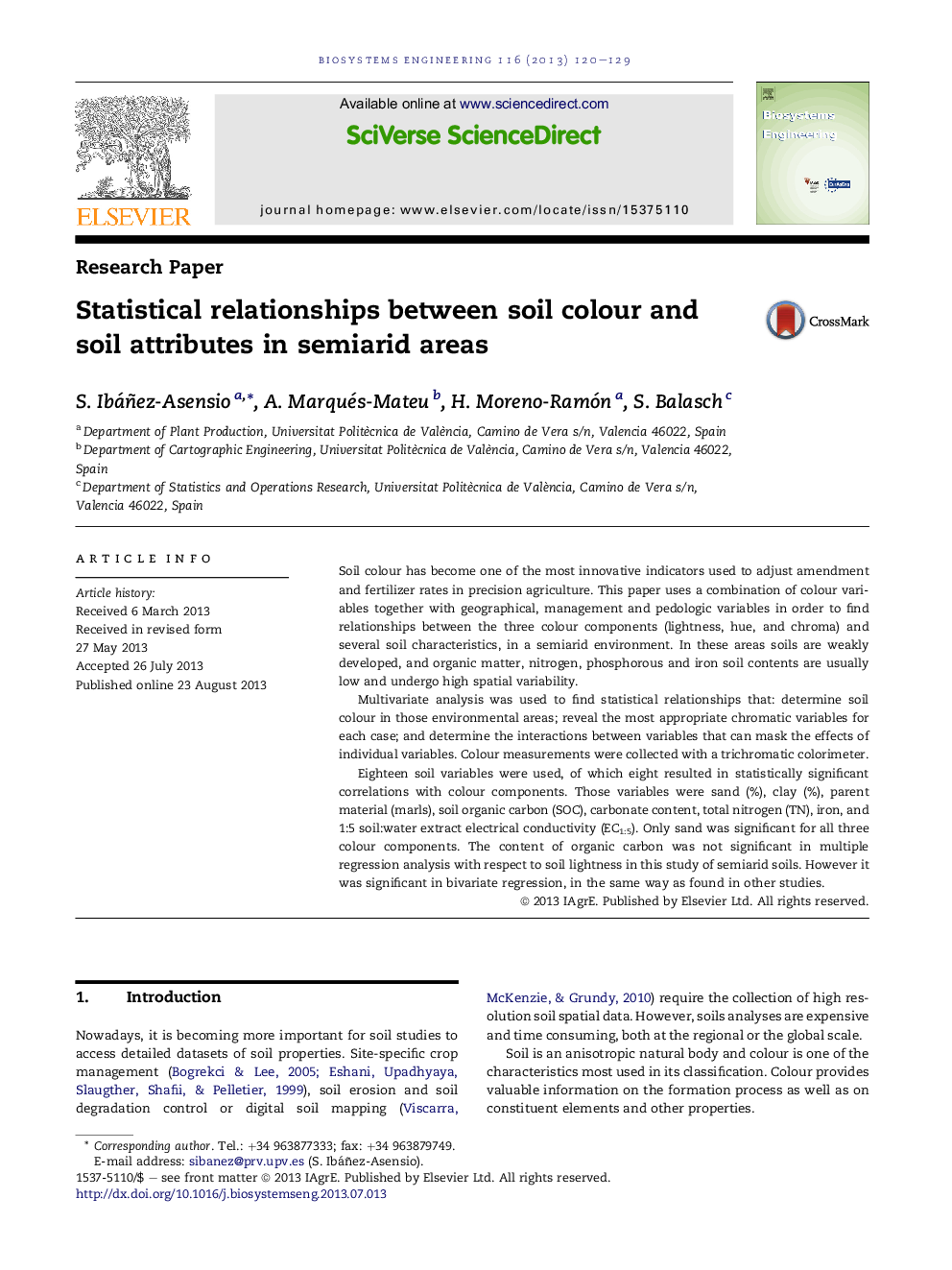| Article ID | Journal | Published Year | Pages | File Type |
|---|---|---|---|---|
| 1711268 | Biosystems Engineering | 2013 | 10 Pages |
•Carbonates, EC, texture, iron and SOC are the most significant variables.•Low levels of chromogen elements do not complicate statistical correlations.•Specific soil variables are significantly correlated with lightness, chroma and hue.
Soil colour has become one of the most innovative indicators used to adjust amendment and fertilizer rates in precision agriculture. This paper uses a combination of colour variables together with geographical, management and pedologic variables in order to find relationships between the three colour components (lightness, hue, and chroma) and several soil characteristics, in a semiarid environment. In these areas soils are weakly developed, and organic matter, nitrogen, phosphorous and iron soil contents are usually low and undergo high spatial variability.Multivariate analysis was used to find statistical relationships that: determine soil colour in those environmental areas; reveal the most appropriate chromatic variables for each case; and determine the interactions between variables that can mask the effects of individual variables. Colour measurements were collected with a trichromatic colorimeter.Eighteen soil variables were used, of which eight resulted in statistically significant correlations with colour components. Those variables were sand (%), clay (%), parent material (marls), soil organic carbon (SOC), carbonate content, total nitrogen (TN), iron, and 1:5 soil:water extract electrical conductivity (EC1:5). Only sand was significant for all three colour components. The content of organic carbon was not significant in multiple regression analysis with respect to soil lightness in this study of semiarid soils. However it was significant in bivariate regression, in the same way as found in other studies.
